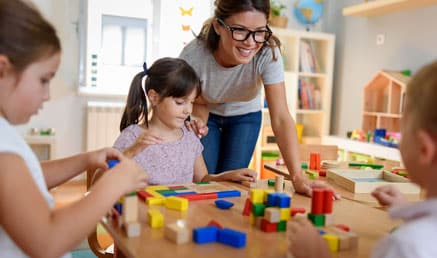
“It’s our polite nudge in the ribs to help you and your team stay organised and on task.”
This week’s subject is Wellbeing and comfort.
Element 2.1.1: Each child’s wellbeing and comfort is provided for, including appropriate opportunities to meet each child’s need for sleep, rest and relaxation.
How does your service ensure that each child’s wellbeing and comfort are prioritised through individualised care practices, responsive environments, and nurturing relationships?
Wellbeing and comfort incorporate both physical and psychological aspects and are central to children’s learning and development. Without a strong sense of wellbeing, it’s difficult for children to develop a sense of belonging, to trust others and feel confident in being themselves and to participate in experiences that support their personal growth (Early Years Learning Framework; Framework for School Age Care).
Services must support and provide for children’s individual needs for wellbeing including sleep, rest, and relaxation, fostering their sense of belonging and comfort within their environment and at the service.Children’s individual comfort and wellbeing requirements may vary for daily routines, such as rest, sleep, dressing, and toileting or nappy changing. Educators should recognise and consider how to incorporate each child’s requirements into their practice:
-
- Provide families with a routine template to complete on their individual child, outlining their sleep and rest requirements and preferences and encourage families to keep these updated as their child’s individual needs change.
- Work in collaboration with families to sensitively support children who are toilet training.
- Develop and follow individualised care routines that are tailored to each child’s needs, preferences and developmental stage for sleep, rest/relaxation, feeding, nappy change and toileting in consultation with families and children.
- Ensure the service maintains a supply of spare clothing for children to access independently (where appropriate), if needed.
- Ensure children who do not want/need to sleep or rest, are provided with alternative opportunities for relaxation and quiet activities.
- Incorporate children’s cultural backgrounds, family practices, and home routines into daily care to provide familiarity and a sense of belonging, in collaboration with families.
- Balance flexibility with consistent daily routines to provide predictability, helping children feel secure while accommodating individual needs or unexpected changes.
- Create calm, inviting, and age-appropriate physical spaces with soft furnishings, quiet areas, and sensory resources to support relaxation and comfort.
- Ensure practices are inclusive, accommodating children with additional needs through specialised support, adaptive equipment, or tailored strategies developed with families and professionals.
- Provide a warm, quiet and comfortable space away from the main play environment for children to rest and engage in relaxation and quiet play experiences.
- Ensuring sleep and rest practices are compliant and meet best practice guidance for children’s health and safety whilst meeting their individual needs.
- Provide opportunities for school aged children to plan routines that support their comfort and of others- places to rest away from main activity areas, listen to music with headphones, or perhaps read a book on a beanbag. Plan games and experiences that support rest and relaxation such as group meditation, yoga, mindfulness, stretching, quiet group games etc.
- Educators use their knowledge of individual children’s routine, likes and dislikes to assist in making nappy change and toileting routines relaxed and positive.
- Provide opportunities for families to communicate with educators, about changes to children’s needs and routines each day.
Consider the following questions to guide reflection on practice at your Service:
-
- How do we find out about individual children’s routines, and ensure that all relevant staff members are informed about these?
- How do we seek information from families about their children’s routine experiences, such as sleeping and toileting patterns, and support the same approaches within the service?
- How do we encourage and support mothers who wish to breastfeed in the service?
- How do we arrange routine times to ensure that children are able to follow their individual needs or preferences, including arrangements for children who do not need or wish to sleep or rest when other children do?
- How do we seek information from children and families about children’s wellbeing, physical comfort or personal needs, and support children sensitively within the service?(OSHC). P162 Guide to the NQF
Resources:
Guide to the NQF- Element 2.1.1: Wellbeing and comfort
Sleep and rest in Outside School Hours Care
Red Nose-Supervision of sleeping and resting children in Early Childhood Education and Care settings
ACECQA- Sleep and rest legislative requirements
Sleep learning for early education professionals
Within System7 go to Quality Area 2/ Modules 1 & 35 to submit self-assessment notes and if required, open a QIP issue if you identify any areas of improvement.
The Childcare Centre Desktop has a range of resources to assist services with physical environment. These include risk assessment and safety check templates and much more.
Resources, NQS Element, Regulation and System7 links:
Childcare Centre Desktop – Childcare Centre Desktop
National Quality Standard – QA 2/ 2.1.1- Wellbeing and comfort
National Regulations – Division 1A-Sleep and rest, 155, 168 (2)(a)(v), 170
System7 Module – QA2/ Modules 1 & 35
If you have any questions send us a note via the Contact page here!




